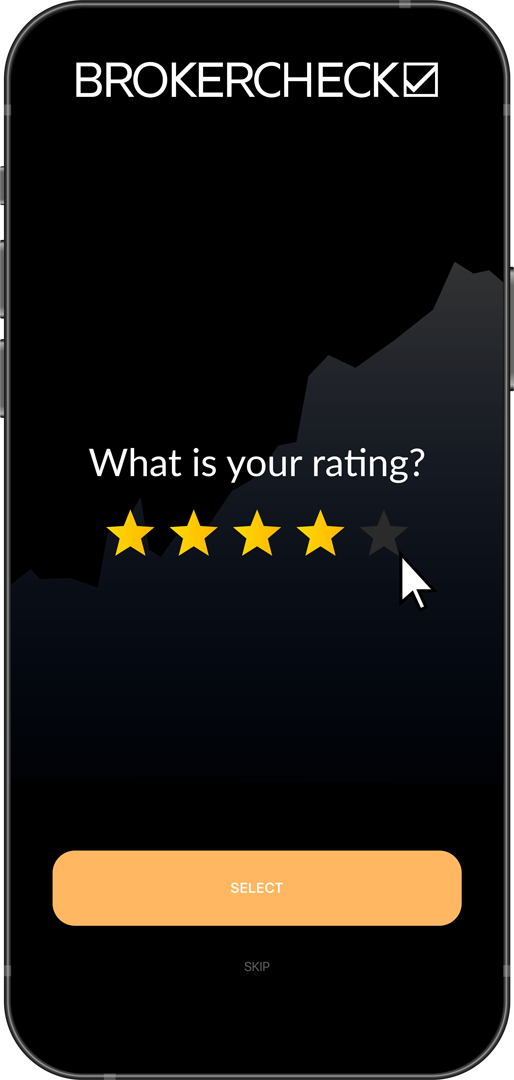1. Understanding Short Selling
1.1. What is Short Selling?
Definition and Basic Concept
Short selling is an investment strategy used by traders to profit from the decline in the price of a security, typically stocks. The fundamental principle involves borrowing shares from a broker and selling them in the open market, with the expectation that the price will drop. The trader aims to buy back the shares at a lower price to return them to the lender, pocketing the difference as profit.
How Does It Work?
- Borrowing Shares: The trader borrows shares from a brokerage firm.
- Selling the Shares: The borrowed shares are sold at the current market price.
- Buying Back: If the price drops, the trader buys back the shares at the lower price.
- Returning Shares: The shares are returned to the lender, and the trader keeps the difference as profit.
1.2. Profit and Loss Mechanics
The profit from short selling is the difference between the selling price and the buying price, minus any associated costs such as interest on the borrowed shares or brokerage fees. Conversely, if the price of the stock rises instead of falling, the trader faces a loss. The loss is calculated as the difference between the higher buy-back price and the original selling price, plus any costs incurred.
Example:
- Initial sale price: $100 per share
- Buy-back price: $80 per share
- Profit per share: $20 (excluding fees)
1.3. Risks Involved in Short Selling
Unlimited Potential Loss
One of the most significant risks in short selling is the potential for unlimited losses. Unlike traditional stock purchases, where the maximum loss is limited to the initial investment, short selling can result in losses far exceeding the initial amount if the stock price rises indefinitely.
Margin Requirements
Short selling typically involves margin trading, where traders borrow funds to execute the trade. This means they must maintain a margin account with the broker and meet specific equity requirements. If the stock price rises, the broker may issue a margin call, requiring the trader to deposit additional funds to cover potential losses.
Market Fluctuations
Market volatility can significantly impact short selling. Sudden price movements, whether due to economic events, company-specific news, or market sentiment, can result in rapid and substantial losses. Traders must closely monitor the market and be prepared for unexpected shifts.

| Aspect | Description |
|---|---|
| Definition | Borrowing shares to sell at a high price and repurchasing at a lower price. |
| Profit Mechanics | Profit from the difference between selling and buy-back prices. |
| Loss Mechanics | Loss occurs if buy-back price is higher than the selling price. |
| Unlimited Potential Loss | Risk of losses exceeding initial investment if stock price rises. |
| Margin Requirements | Need to maintain margin account and meet equity requirements. |
| Market Fluctuations | Price volatility can lead to significant losses. |
2. Short Selling Strategies
2.1. Different Short Selling Methods
Naked Short Selling
Naked short selling refers to the practice of selling shares without first borrowing them or ensuring they can be borrowed. This method is highly controversial and is banned in many markets due to the potential for market manipulation and excessive downward pressure on stock prices.
Key Points:
- Involves selling shares without borrowing them first.
- Considered illegal in many jurisdictions.
- Can create artificial selling pressure and market instability.
Covered Short Selling
Covered short selling is the conventional and legal method of short selling where the trader borrows the shares before selling them in the market. This method ensures that the shares are available to be returned to the lender when the position is closed.
Key Points:
- Involves borrowing shares before selling them.
- Legal and regulated.
- Ensures the availability of shares to return.
Short Selling Options
Options can also be used in short selling strategies, providing a more sophisticated approach to betting against a stock. This can include buying put options or selling call options.
Key Points:
- Put Options: Contracts that give the holder the right to sell a stock at a specific price within a certain period.
- Call Options: Selling call options (covered calls) involves selling the right to someone else to buy the stock you own at a predetermined price.
2.2. When to Short Sell
Market Conditions
Successful short selling often depends on understanding and predicting market conditions. Ideal scenarios for short selling include:
- Bear Markets: General market downturns where stock prices are broadly declining.
- Overvalued Stocks: Stocks that have risen too high, too quickly, often due to hype or speculation.
- Economic Downturns: Periods of economic recession or negative financial news.
Fundamental Analysis
Fundamental analysis involves evaluating a company’s financial health, industry position, and macroeconomic factors to determine if a stock is overvalued. Key indicators include:
- P/E Ratios: High price-to-earnings ratios may indicate overvaluation.
- Earnings Reports: Poor earnings performance can signal a potential decline.
- Debt Levels: High debt levels relative to equity can be a red flag.
Technical Analysis
Technical analysis uses historical price data and trading volumes to predict future price movements. Common indicators for short selling include:
- Moving Averages: A stock crossing below its moving average can signal a downturn.
- Relative Strength Index (RSI): An overbought condition (RSI above 70) may indicate a potential decline.
- Chart Patterns: Patterns such as head and shoulders or double tops can signal reversal points.
2.3. Short Selling Indicators
Identifying Potential Short Selling Opportunities
Effective short selling requires identifying stocks that are likely to decline. Key indicators include:
- Insider Selling: Significant selling by insiders can be a red flag.
- Analyst Downgrades: Negative reports from analysts can drive stock prices down.
- Negative News: Bad press, legal issues, or product failures can trigger declines.

| Aspect | Description |
|---|---|
| Naked Short Selling | Selling shares without borrowing them, often illegal and controversial. |
| Covered Short Selling | Legal method involving borrowing shares before selling. |
| Short Selling Options | Using put or call options to implement short selling strategies. |
| Market Conditions | Ideal during bear markets, economic downturns, or overvalued stocks. |
| Fundamental Analysis | Evaluating financial health and macroeconomic factors. |
| Technical Analysis | Using historical price data and trading volumes to predict movements. |
| Short Selling Indicators | Insider selling, analyst downgrades, and negative news as signals. |
3. Practical Guide to Short Selling
3.1. How to Start Short Selling
Opening a Brokerage Account
To start short selling, the first step is to open a margin account with a brokerage firm. A margin account allows traders to borrow money or shares to trade. When choosing a brokerage, consider factors such as trading fees, margin rates, available tools, and customer service.
Steps to Open a Margin Account:
- Select a Broker: Research and choose a broker that supports short selling and offers favorable terms.
- Application Process: Complete the brokerage application, providing necessary personal and financial information.
- Approval: Once approved, fund the account with the required minimum balance.
- Margin Agreement: Sign a margin agreement to enable borrowing.
Meeting Margin Requirements
Margin accounts require traders to maintain a certain level of equity, known as the margin requirement. This is typically a percentage of the total value of the short sale. If the equity in the account falls below this requirement, the broker may issue a margin call, demanding additional funds or the liquidation of assets to cover the short position.
Key Points:
- Initial Margin: The amount required to open a short position, usually around 50% of the trade value.
- Maintenance Margin: The minimum equity that must be maintained, often around 25-30%.
3.2. Best Stocks to Short Sell
Criteria for Selecting Short Candidates
Choosing the right stocks to short sell involves identifying those that are likely to decline. Consider the following criteria:
- Overvaluation: Stocks with high P/E ratios or inflated prices due to speculation.
- Weak Fundamentals: Companies with declining revenues, high debt levels, or poor management.
- Sector Analysis: Industries facing economic downturns or regulatory challenges.
Researching Companies
In-depth research is crucial to identify potential short selling opportunities. This includes:
- Financial Statements: Analyzing balance sheets, income statements, and cash flow statements.
- Earnings Reports: Reviewing quarterly and annual earnings for signs of trouble.
- Industry Trends: Understanding the broader industry context and competitive landscape.
3.3. Short Selling Platforms and Tools
Brokerage Platforms
Different brokerage platforms offer various features for short selling. Key features to look for include:
- User Interface: Ease of use and navigation.
- Research Tools: Access to comprehensive research reports and financial data.
- Execution Speed: Fast and reliable trade execution.
Popular Brokerage Platforms:
- Interactive Brokers: Known for low fees and extensive short selling tools.
- TD Ameritrade: Offers robust research tools and educational resources.
- E*TRADE: User-friendly platform with strong customer support.
Trading Platforms
In addition to brokerage platforms, specialized trading platforms can enhance short selling strategies. These platforms often provide advanced charting tools, real-time data, and customizable interfaces.
Examples:
- Thinkorswim: Advanced trading platform by TD Ameritrade with powerful analysis tools.
- TradeStation: Offers extensive charting and automated trading features.
Research Tools
Effective short selling requires access to high-quality research tools. These can include:
- Screeners: Tools to filter stocks based on specific criteria such as overvaluation or weak fundamentals.
- News Feeds: Real-time news to stay updated on market developments.
- Analyst Reports: Professional insights and recommendations.
Examples:
- Morningstar: Comprehensive research and analysis tools.
- Bloomberg Terminal: High-end professional tool for real-time market data and analysis.
3.4. Short Selling Courses and Education
Education is crucial for mastering short selling. Many online courses and resources are available to help traders understand the complexities and develop effective strategies.
Popular Resources:
- Investopedia Academy: Offers courses on trading and short selling basics.
- Udemy: Wide range of courses covering different aspects of short selling.
- YouTube Channels: Educational videos from experienced traders.
| Aspect | Description |
|---|---|
| Opening a Brokerage Account | Choose a broker, complete application, fund account, sign margin agreement. |
| Meeting Margin Requirements | Maintain initial and maintenance margins to avoid margin calls. |
| Best Stocks to Short Sell | Look for overvalued stocks, weak fundamentals, and troubled sectors. |
| Researching Companies | Analyze financial statements, earnings reports, and industry trends. |
| Brokerage Platforms | Select platforms with good UI, research tools, and fast execution. |
| Trading Platforms | Use specialized platforms for advanced charting and real-time data. |
| Research Tools | Utilize screeners, news feeds, and analyst reports for informed decisions. |
| Short Selling Courses | Enroll in courses and utilize online resources for in-depth learning. |
4. Risk Management
4.1. Short Selling Risk Management Strategies
Stop-Loss Orders
A stop-loss order is a predetermined price at which a short position will automatically be closed to prevent further losses. This is a critical tool for risk management in short selling, as it helps to cap potential losses.
Key Points:
- Placement: Set a stop-loss order at a price level where you are not willing to incur more loss.
- Automatic Execution: Once the stock reaches the stop-loss price, the order is triggered automatically.
- Protection: Provides a safety net against unexpected market movements.
Hedging
Hedging involves taking an offsetting position in a related security to mitigate risk. This can be done using options, futures, or other financial instruments.
Key Strategies:
- Put Options: Buying put options on the same stock can limit losses if the stock price rises.
- Inverse ETFs: Investing in inverse ETFs, which move opposite to the market, can also hedge against losses.
Diversification
Diversification involves spreading investments across various securities to reduce exposure to any single asset. This can help mitigate the impact of a poor-performing short position.
Key Points:
- Multiple Positions: Hold short positions in different sectors or industries.
- Balance: Combine short positions with long positions to balance overall portfolio risk.
4.2. Calculating Potential Losses
Understanding and calculating potential losses is crucial for effective risk management in short selling. This involves assessing the worst-case scenario and determining how much capital is at risk.
Steps to Calculate:
- Determine Entry and Exit Prices: Estimate the price at which you will close the position if the market moves against you.
- Account for Costs: Include borrowing fees, interest, and brokerage commissions.
- Calculate Total Loss: Multiply the difference between the entry and exit prices by the number of shares sold short.
Example Calculation:
- Entry Price: $50 per share
- Stop-Loss Price: $60 per share
- Shares Sold Short: 100
- Potential Loss per Share: $10
- Total Potential Loss: $1,000 (excluding fees)
4,3, Margin Calls
Margin calls occur when the equity in a margin account falls below the broker’s required minimum. To meet a margin call, traders must deposit additional funds or sell assets to cover the shortfall.
Key Points:
- Avoiding Margin Calls: Maintain sufficient equity and monitor positions closely.
- Responding to Margin Calls: Act quickly to add funds or close positions to avoid forced liquidation.
4.4. Managing Emotions
Emotional discipline is essential in short selling, as the potential for unlimited losses can lead to stress and impulsive decisions. Developing a clear plan and sticking to it can help manage emotions effectively.
Tips for Managing Emotions:
- Set Realistic Goals: Establish achievable targets and avoid chasing unrealistic profits.
- Stay Informed: Keep up with market news and trends to make informed decisions.
- Practice Patience: Avoid making hasty decisions based on short-term market movements.
| Aspect | Description |
|---|---|
| Stop-Loss Orders | Predetermined price to close positions and prevent further losses. |
| Hedging | Offsetting positions to mitigate risk using options or inverse ETFs. |
| Diversification | Spreading investments across various securities to reduce risk exposure. |
| Calculating Potential Losses | Assessing worst-case scenarios and determining capital at risk. |
| Margin Calls | Occur when equity falls below minimum; require additional funds or asset sales. |
| Managing Emotions | Developing a clear plan and avoiding impulsive decisions. |
5. Legal and Ethical Considerations
5.1. Short Selling Regulations
SEC Rules
In the United States, short selling is regulated by the Securities and Exchange Commission (SEC). The SEC has established several rules to ensure fair practices and maintain market integrity.
Key Rules:
- Regulation SHO: This regulation requires brokers to locate and secure shares before executing a short sale to prevent naked short selling. It also mandates that brokers must deliver the shares within a specific time frame.
- Rule 201 (Alternative Uptick Rule): Introduced to curb excessive short selling during market downturns, this rule restricts short selling when a stock’s price declines by 10% or more in a single day. Short sales can only be executed at a price above the national best bid.
Uptick Rule
The original uptick rule, established in 1938, required that each short sale transaction be entered at a price higher than the last trade. This rule aimed to prevent short sellers from driving the price of a stock down in a rapid and continuous manner. Although the original rule was repealed in 2007, the alternative uptick rule (Rule 201) now serves a similar purpose under certain conditions.
Insider Trading
Insider trading involves buying or selling securities based on non-public, material information about a company. It is illegal and subject to severe penalties, including fines and imprisonment.
Key Points:
- Definition: Trading based on confidential information not available to the public.
- Penalties: Includes fines, imprisonment, and disqualification from serving as an officer or director of a public company.
- Detection: Regulators use sophisticated surveillance and data analysis tools to detect insider trading.
5.2. Legal Implications
Market Manipulation
Market manipulation involves artificially inflating or deflating the price of a security to deceive or mislead market participants. This practice is illegal and undermines market integrity.
Common Forms of Market Manipulation:
- Pump and Dump: Spreading false or misleading information to inflate a stock’s price, then selling it at the inflated price.
- Short and Distort: Spreading false information to drive a stock’s price down, then buying it at the lower price.
Avoiding Illegal Practices
To ensure compliance with regulations and ethical standards, traders should:
- Adhere to SEC Rules: Follow all regulations set forth by the SEC and other regulatory bodies.
- Avoid Misleading Information: Refrain from spreading false or misleading information about a company.
- Conduct Due Diligence: Base trading decisions on thorough research and publicly available information.

| Aspect | Description |
|---|---|
| SEC Rules | Regulation SHO, Alternative Uptick Rule to ensure fair practices. |
| Uptick Rule | Restricts short selling during market downturns to prevent rapid declines. |
| Insider Trading | Illegal trading based on non-public, material information. |
| Market Manipulation | Artificially inflating/deflating prices to deceive market participants. |
| Avoiding Illegal Practices | Adhere to regulations, avoid misleading information, conduct due diligence. |
6. Advanced Short Selling Topics
6.1. Short Selling Options Strategies
Protective Puts
A protective put involves purchasing a put option for a stock that you have sold short. This strategy provides insurance against a potential rise in the stock price, as the put option increases in value if the stock price rises above the strike price.
Key Points:
- Hedge Against Losses: Limits potential losses by ensuring the right to sell at the strike price.
- Cost: The price of the put option is a cost that reduces overall profit.
Example:
- Short Sell Price: $100 per share
- Put Option Strike Price: $105 per share
- Premium Paid for Put: $2 per share
Covered Calls
Covered calls involve selling call options on a stock that you own. Although this is not a direct short selling strategy, it can be combined with a short position to create a more complex hedging strategy.
Key Points:
- Generate Income: Earn premium from selling call options.
- Limited Upside: The potential for gain is capped by the strike price of the call option.
Example:
- Stock Owned: 100 shares at $100 each
- Call Option Strike Price: $110 per share
- Premium Received: $3 per share
6.2. Short Selling ETFs
Exchange-Traded Funds (ETFs) can also be shorted. This strategy allows traders to bet against a broader market index or sector rather than individual stocks, providing diversification and potentially reducing specific stock risk.
Key Points:
- Diversification: Reduces risk by shorting a basket of stocks.
- Market Sentiment: Used to bet against overall market or sector performance.
Examples:
- Shorting SPY: Betting against the S&P 500 index.
- Shorting QQQ: Betting against the NASDAQ-100 index.
6.3. Short Selling Foreign Stocks
Short selling foreign stocks involves additional complexities, such as differing regulations, currency risk, and varying market conditions. Traders must be well-versed in the local market practices and legal requirements.
Key Points:
- Regulatory Differences: Each country has unique short selling regulations.
- Currency Risk: Fluctuations in currency exchange rates can impact profits and losses.
- Market Access: Requires access to international trading platforms.
Examples:
- ADR Shorting: American Depository Receipts (ADRs) allow shorting of foreign stocks listed on U.S. exchanges.
- Direct Foreign Shorting: Requires brokerage accounts that provide access to foreign markets.
6.4. Short Selling in Different Market Conditions
Bear Markets
Bear markets, characterized by declining stock prices, are generally favorable for short selling. Traders can take advantage of the overall negative sentiment and declining prices.
Key Points:
- Downtrend: Consistent price declines make it easier to profit from short selling.
- Increased Volatility: While risky, volatility can provide more opportunities for profitable trades.
Bull Markets
Short selling in bull markets is more challenging, as prices are generally rising. However, selective shorting of overvalued stocks or those with poor fundamentals can still be profitable.
Key Points:
- Selective Shorting: Focus on overvalued stocks or companies with deteriorating fundamentals.
- Risk Management: Emphasize stop-loss orders and hedging strategies.
| Aspect | Description |
|---|---|
| Protective Puts | Buying put options to hedge against rising stock prices. |
| Covered Calls | Selling call options on owned stocks to generate income. |
| Short Selling ETFs | Shorting ETFs to bet against broader market indices or sectors. |
| Short Selling Foreign Stocks | Shorting stocks in foreign markets with additional regulatory and currency risks. |
| Short Selling in Bear Markets | Profiting from overall market declines with increased volatility. |
| Short Selling in Bull Markets | Selectively shorting overvalued stocks or those with poor fundamentals. |
Final Thoughts
Short selling can be a valuable tool for traders looking to capitalize on declining stock prices. However, it requires a deep understanding of the market, rigorous research, and disciplined risk management. By following the guidelines and best practices outlined in this article, traders can navigate the complexities of short selling and enhance their overall trading strategy.











